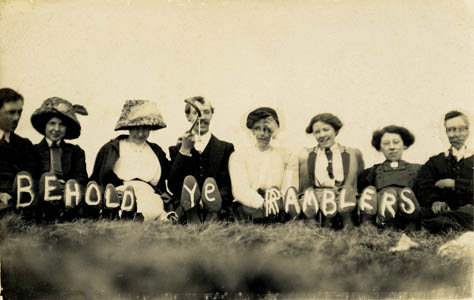
Not a bobble hat in sight: early ramblers show their sense of humour
From the present Gore-tex world of GPS, Twitter, electronic maps and online route planning, the 1930s seem an eternity away.
It was an age where a hillwalking expedition meant putting on your worn-out clothes, hopping on a train and joining hundreds of others escaping the grime of the cities for a breath of fresh air.
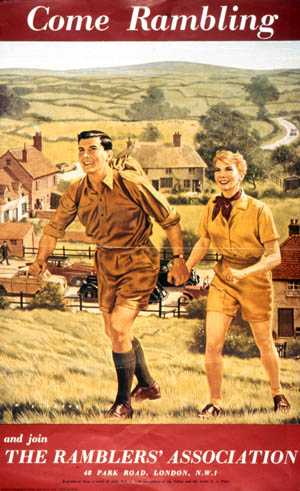
Healthy and wholesome: the Ramblers have always stressed the benefits of walking
Of course, there was also the chance you could find yourself staring down the barrels of a gamekeeper’s 12-bore, or turfed off a footpath at the whim of the landowner.
Not surprisingly, walkers clubbed together for strength in numbers. They were a curious collection, ranging from the Communist-inspired British Workers Sports Federation to the middle-class professionals of the London-based Sunday Tramps.
Long before the 30s, the value of recreational walking had been recognised, with the Commons, Open Spaces and Footpaths Preservation Society – which later became the Open Spaces Society – being formed in 1865. The West of Scotland Ramblers’ Alliance came into being in Glasgow in 1892 and all over Britain ramblers’ clubs and groups were instituted to provide healthy activity and a voice for the population in its fight for the right to walk the hills and countryside of Britain.
It was a slow progression. More than 100 years after the appearance of the Association for the Protection of Ancient Footpaths in the Vicinity of York and the Manchester Association for the Preservation of Ancient Footpaths, the gamekeepers of the gentry were still preventing working-class ramblers from walking the moors of the Peak District.
In the Sheffield area, the Clarion Ramblers, led by George Herbert Bridges Ward, led forays on to Bleaklow in a deliberate trespass to press for walkers’ rights.
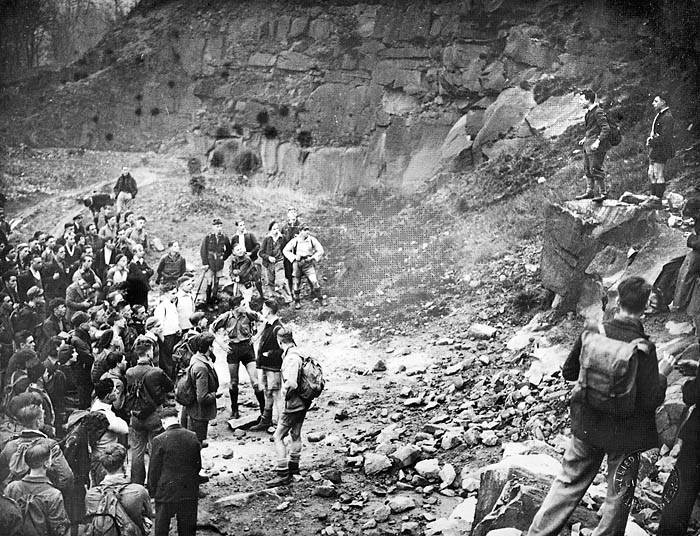
Benny Rothman addresses ramblers at Bowden Bridge quarry before the trespass
Manchester factory worker Benny Rothman led the pivotal 1932 mass trespass on Kinder Scout that led to his, and four of his comrades’, jailing after a confrontation with the Duke of Devonshire’s staff.
The fledgling National Council of Ramblers’ Federations, formed the previous year to try to co-ordinate the numerous clubs and associations that were active in the movement, reacted with horror at the direct tactics of Rothman and his fellow ‘hotheads’ and distanced itself from the event.
By 1935, the council had become the main voice for ramblers and on 1 January of that year, the Ramblers’ Association was officially founded. It would have 300 affiliated clubs and 1,200 individual members in its first year.
Seventy-five years later, the campaigning group is still seen by many as representative of the bobble-hat wearing walker in ancient sweater, carrying a gnarled walking stick and tartan Thermos flask.
Which is one reason the Ramblers’ Association went through a painful and controversial transformation last year. Out went the apostrophe and the ‘association’; in came a youthful emphasis and £35,000 makeover, encouraging urban walkers, themed walks and inclusiveness – some of which has not gone down well with traditional-minded walkers among the organisation’s 100,00-plus members.
There have been painful cuts due to drops in revenue as falling membership has led to straitened financial times, with the Ramblers’ Scottish and Welsh offices being particularly hard-hit and rumblings of dissent, especially north of the border.
Yet, despite the modernisation and embracing of urban strolls, the Ramblers are still a force to be reckoned with and a campaigning organisation.
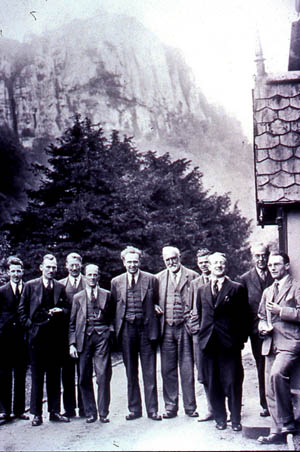
Early luminaries in the ramblers' movement
Its roll-call of successes including national trails, from former Ramblers’ Association secretary Tom Stephenson’s dream of the Pennine Way, to the establishment of national parks, the passing of Labour’s Countryside and Rights of Way Act and the even more walker-friendly Land Reform (Scotland) Act.
Smaller victories include persuading Ordnance Survey to include rights of way on its maps; forcing local authorities to signpost footpaths, and helping strengthen the arm of national park authorities.
And the latest piece of legislation to be added to the statute books, the Marine and Coastal Access Act – establishing the principle of an all-England coast path – is in no small measure down to forceful campaigning by the Ramblers, among others.
So the organisation is marking its 75th birthday with a series of ‘baton walks’ during which an anniversary baton will make its way up Britain before returning south for an end-of-year celebration.
Chief executive Tom Franklin said: “For 75 years, the Ramblers have existed as Britain’s walking charity, to help everyone – no matter who they are or where they’re from – experience the joy of walking.”
The baton began its journey on New Year’s Eve 2009 at the Trencrom Tipsy Toddle in Cornwall, where 75 red balloons – the symbol chosen by the Ramblers for their anniversary – were released and walkers sank a glass or two of mulled wine.
The baton is making its way from the South-West, through Wales and then northwards to Scotland. It will then come back through Yorkshire and the East, London and the South East by the end of the year.
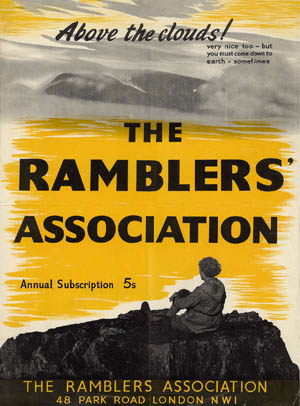
Rising above it: for 5s (25p) annual subscription, you too could enjoy the Ramblers' benefits
A St David’s Day walk will take place on 1 March around Carreg Cennen Castle and on 13 March Cardiff Ramblers will join the Minority Ethnic Women’s Network for a ramble round Roath Park using a special Indian dancing stick as the baton. Further March walks will take place before the baton moves north.
Whether you treasure your bobble hat or are more comfortable walking with the Gay City Strollers, there is no denying the Ramblers have been a forceful voice for walkers in Britain for the last 75 years. For that, at least, outdoor enthusiasts have reason to be thankful.
Details of baton walks and other celebration events can be found on the Ramblers’ website.
Highlights from the past 75 years include:
- First edition of Rambling published by the National Council of Ramblers’ Federations, June 1933
- Ramblers’ Association founded 1 January 1935
- First Ramblers’ office opened in Liverpool 1938
- Access to Mountains Act passed, 1939, but so diluted by amendments as to make it of no use
- Ramblers accept the need to plough fields for the war effort between 1939 and 1945, but insist they are restored afterwards
- RA publishes Walking in Wartime, with instructions to carry identity cards and finish walks before nightfall
- Ramblers suggest creation of official long-distance paths and national parks, 1941
- RA office moves to London 1945
- Tom Stephenson appointed first full-time secretary, 1948
- National Parks and Access to the Countryside Act passed, 1949
- First national park established in the Peak District, 1951
- Britain’s first official long-distance footpath, the Pennine Way, opened, 1965
- Ramblers Scotland established, 1967
- Countryside Act passed, forcing authorities to put up signposts on footpaths, 1968
- Ramblers Wales set up, 1974
- Countryside and Rights of Way Act passed in England and Wales, 2000
- Land Reform (Scotland) Act became law, 2003
- Marine and Coastal Access Act passed, 2009, establishing the idea of a coastal path around England’s shoreline.
Simon
23 April 2017Hello there, I'm trying to locate a print of the Rambler's Association magazine cover as seen in this article. Does anybody know who to contact in order to obtain a copy please? It's for my Grandad's birthday; he was in the R.A. in the '50s and remembers the advert with the man and woman on the hillside.
Any assistance would be greatly appreciated,
Simon